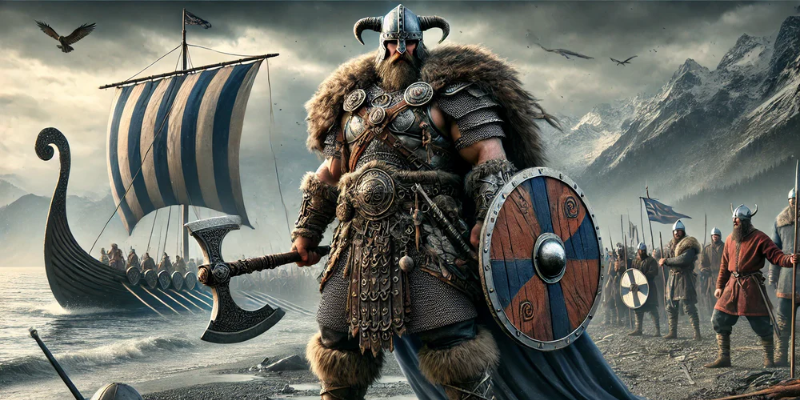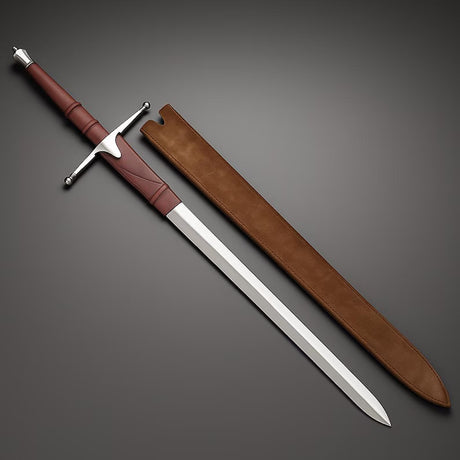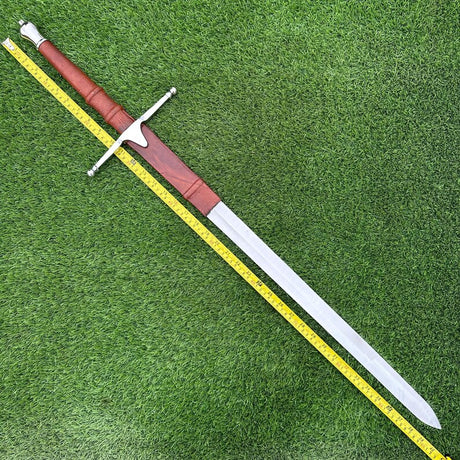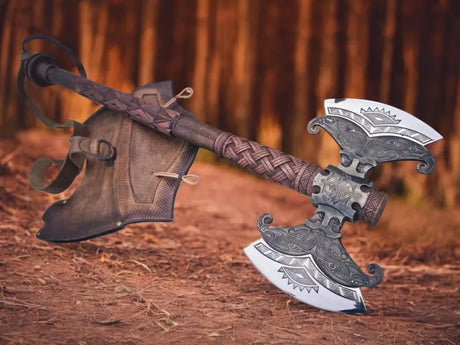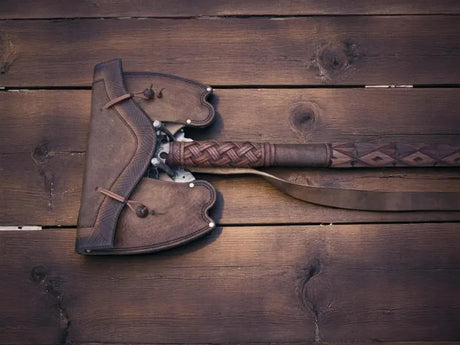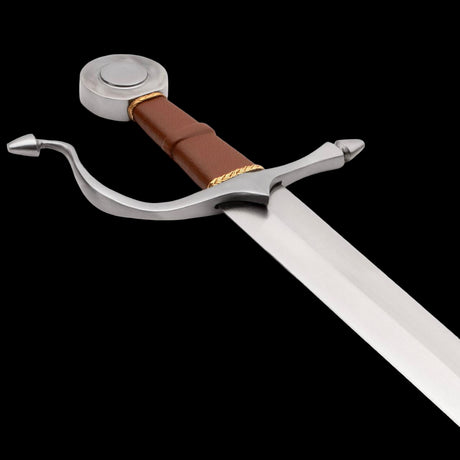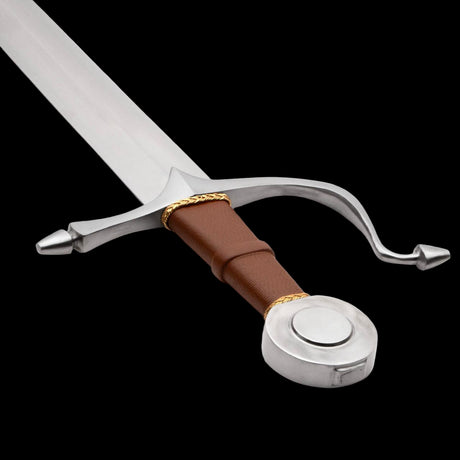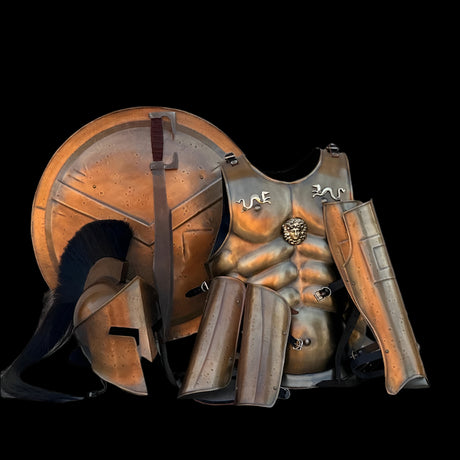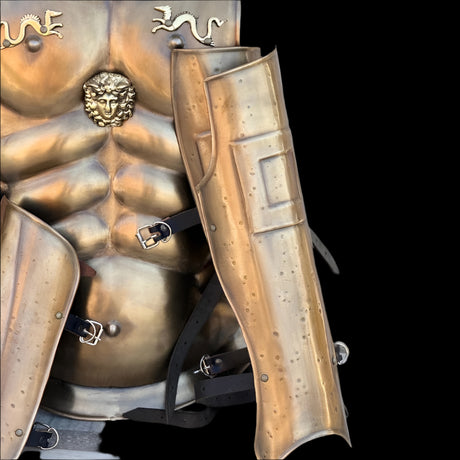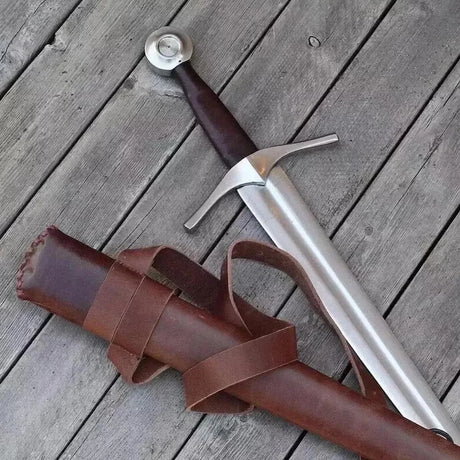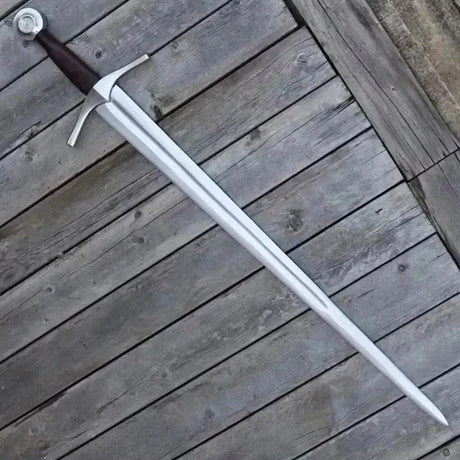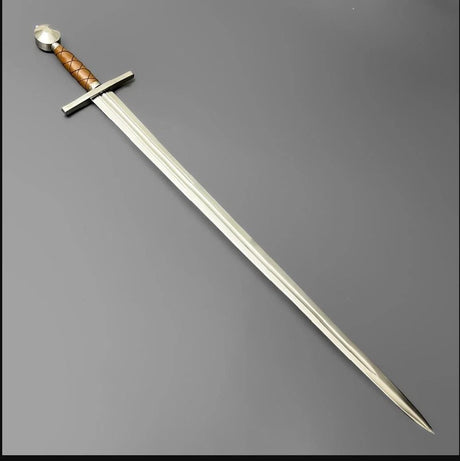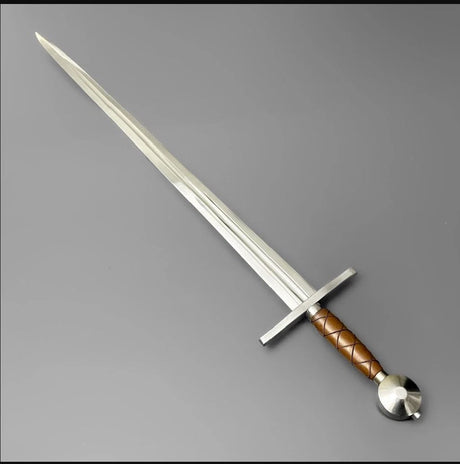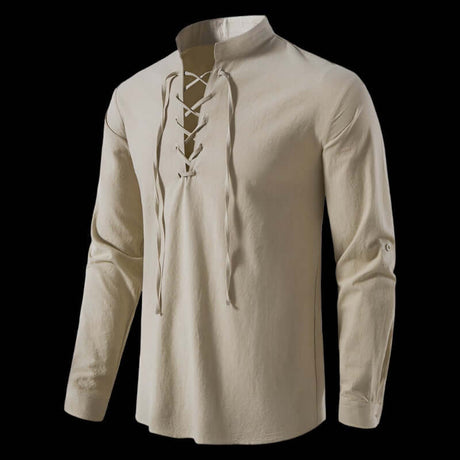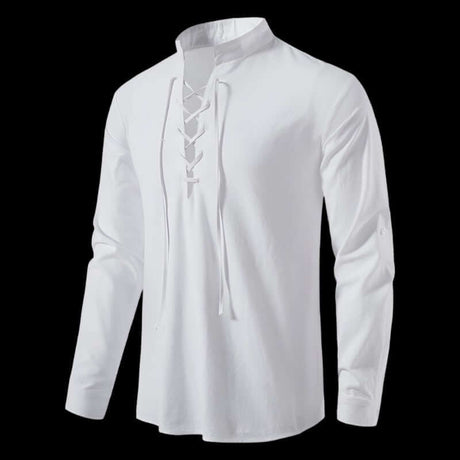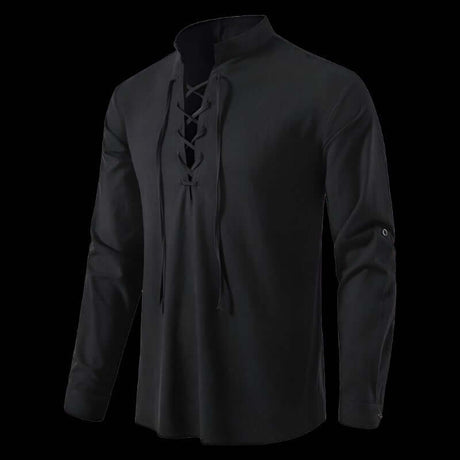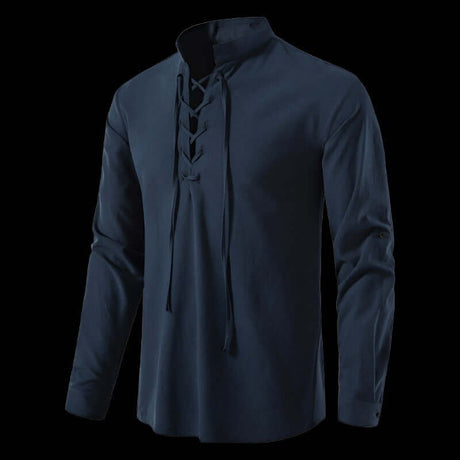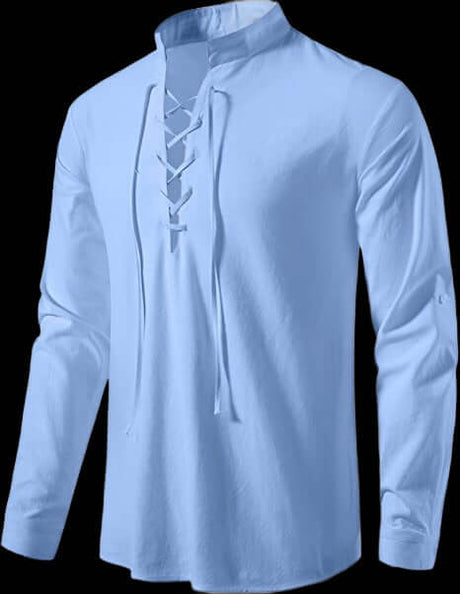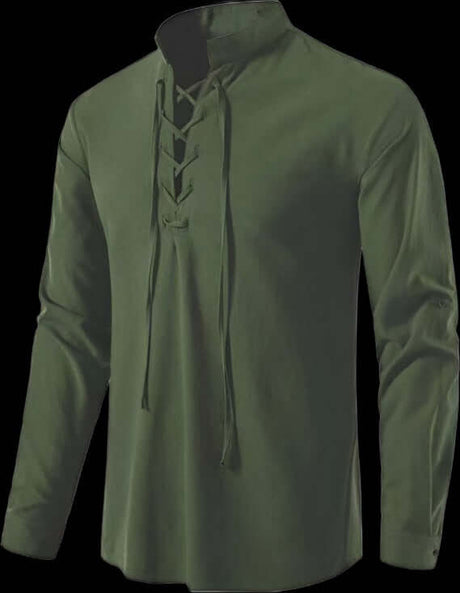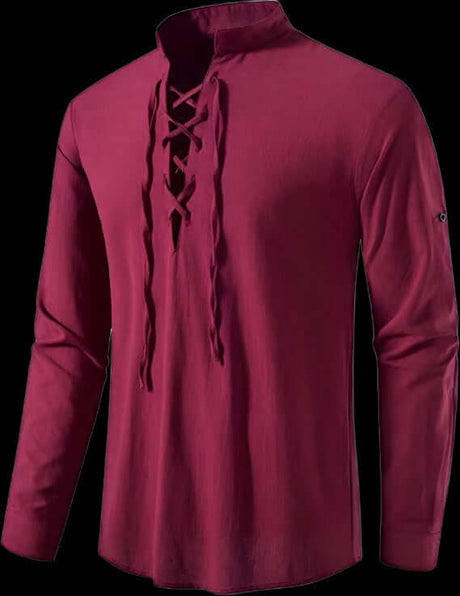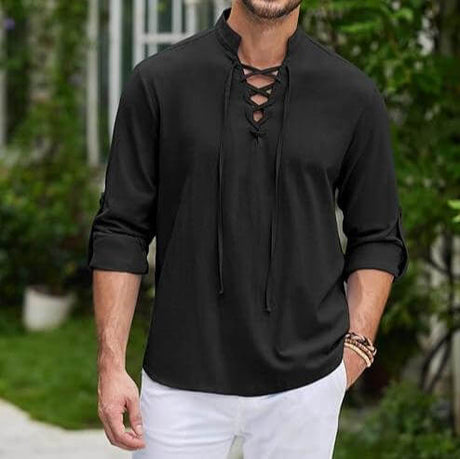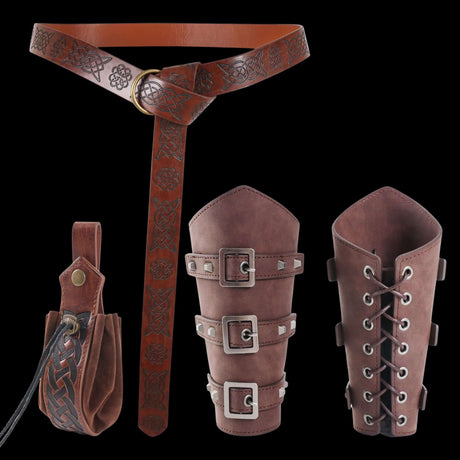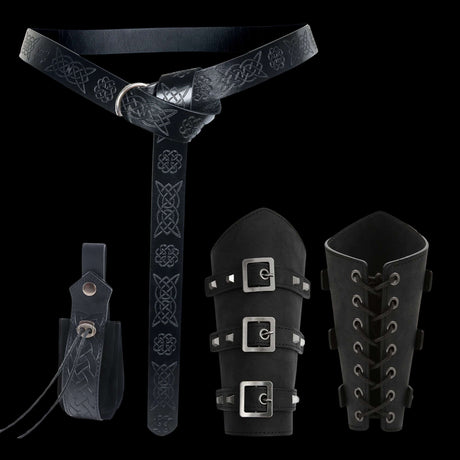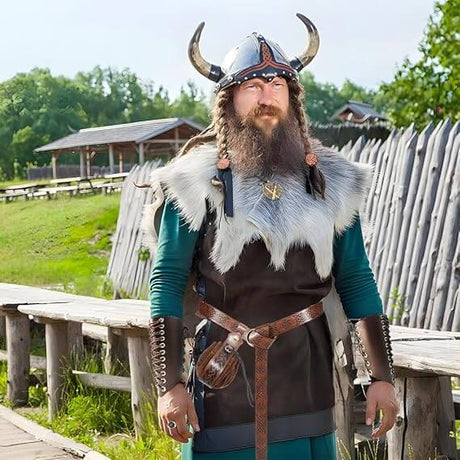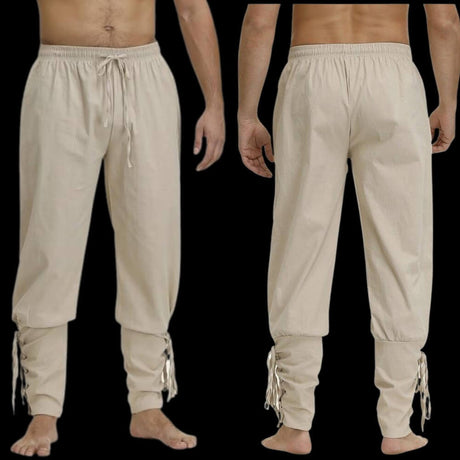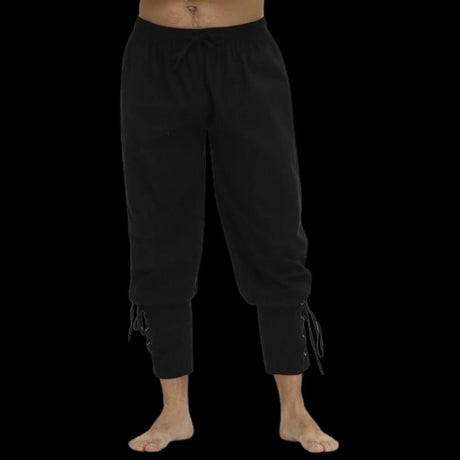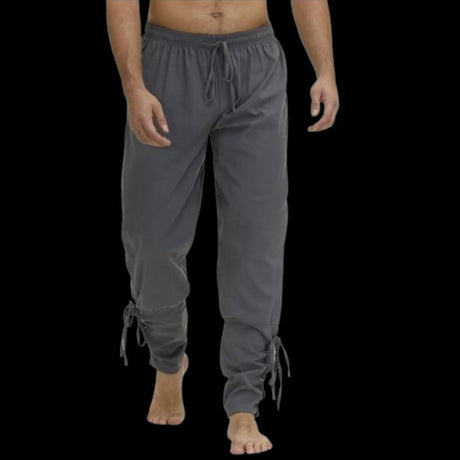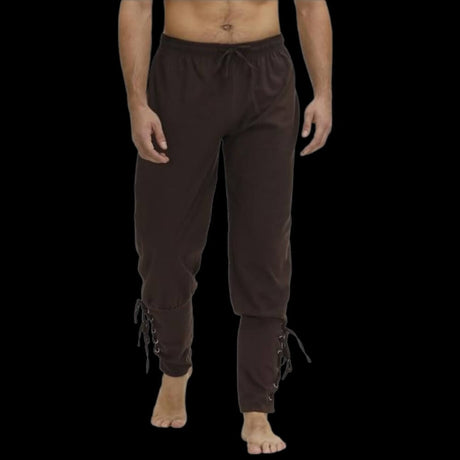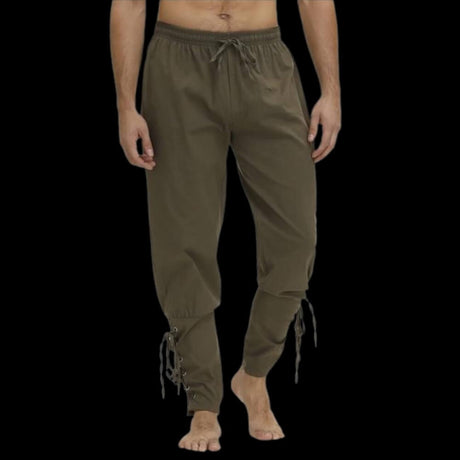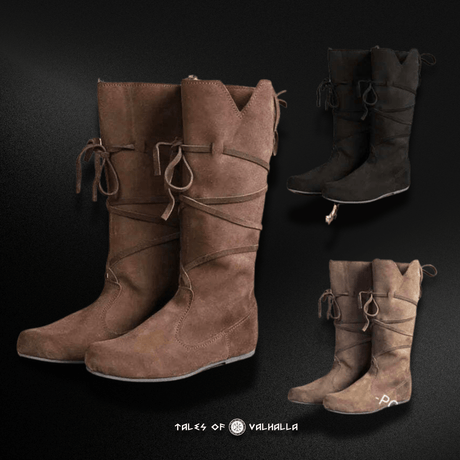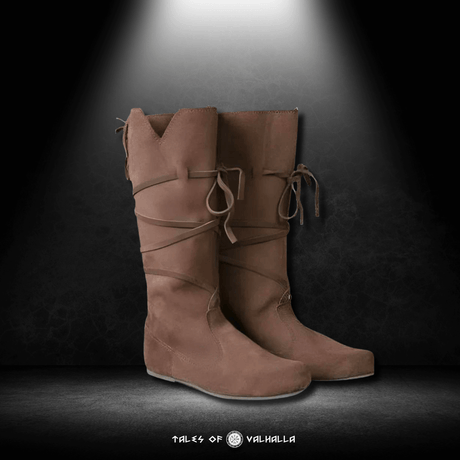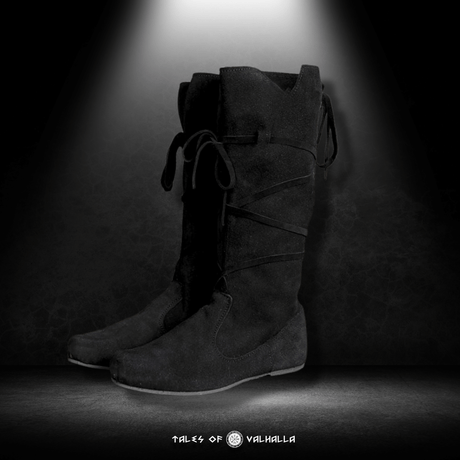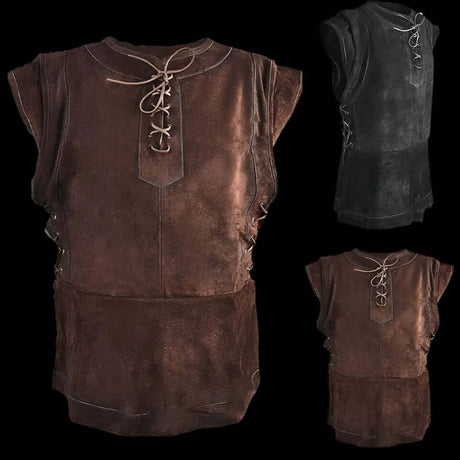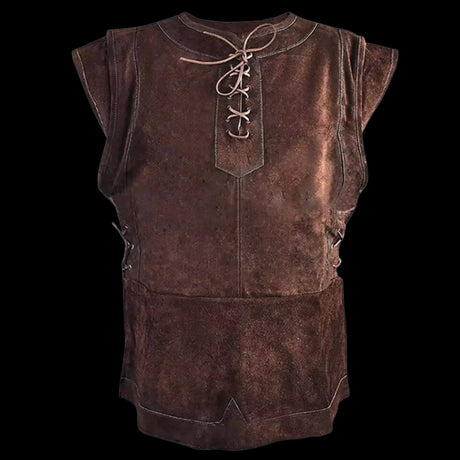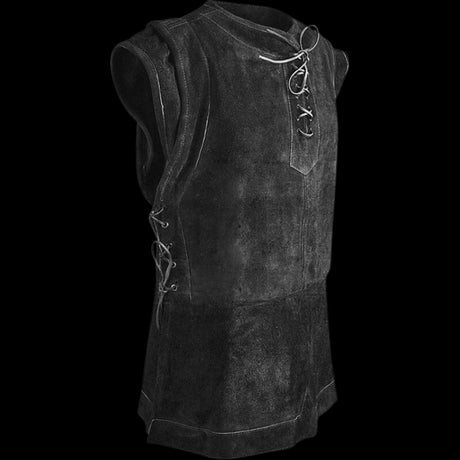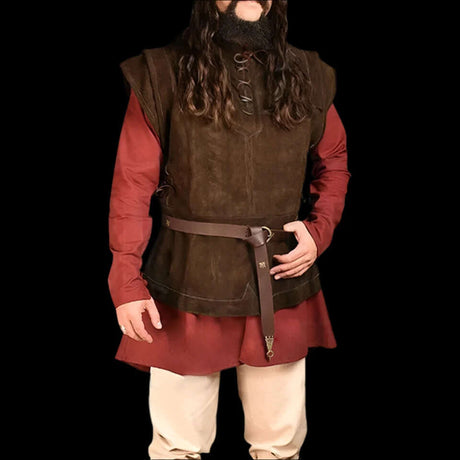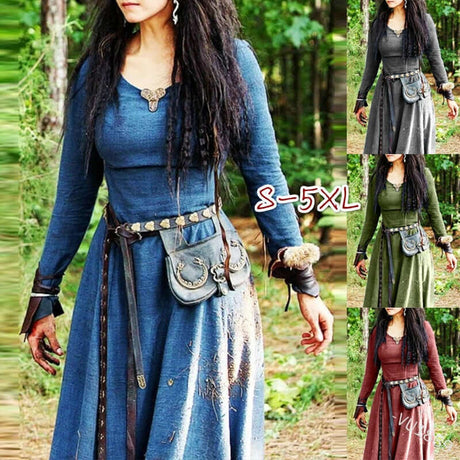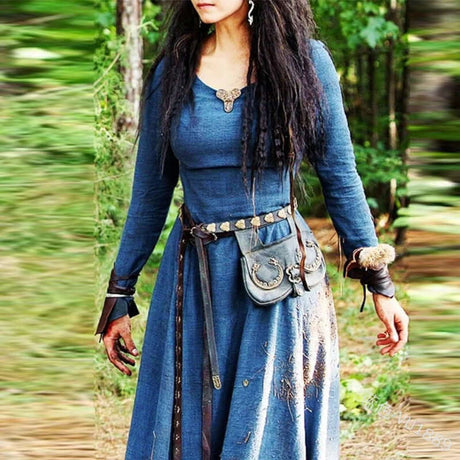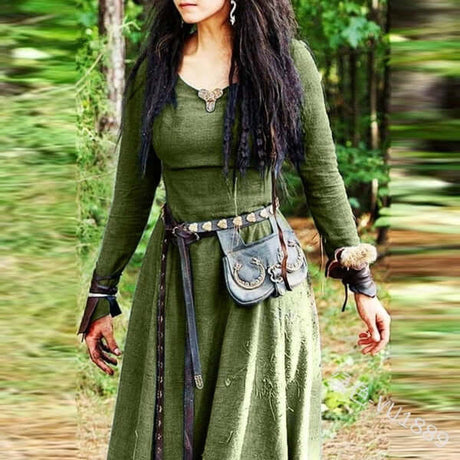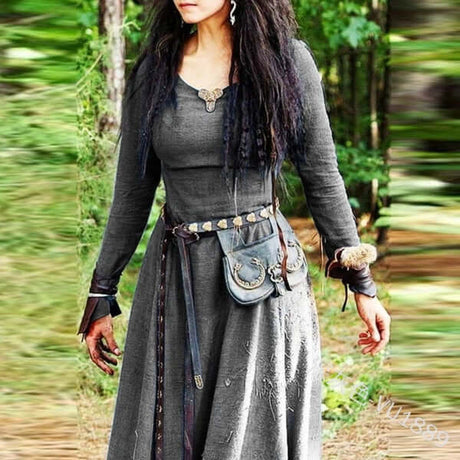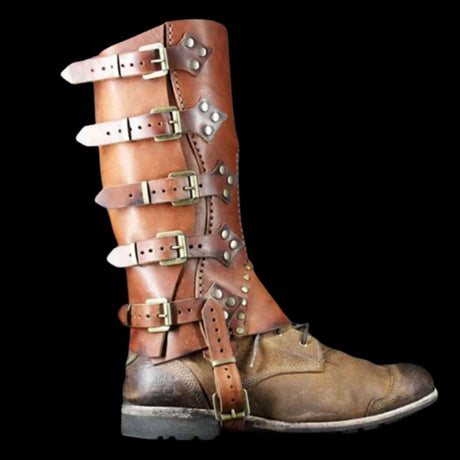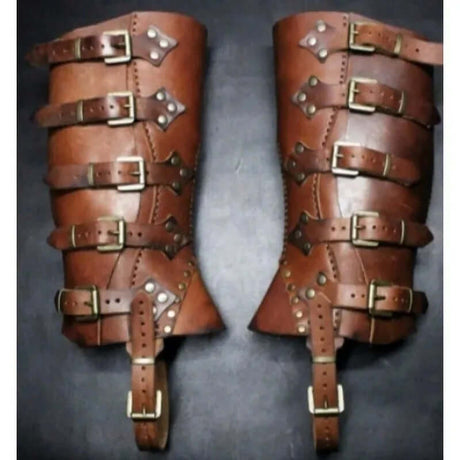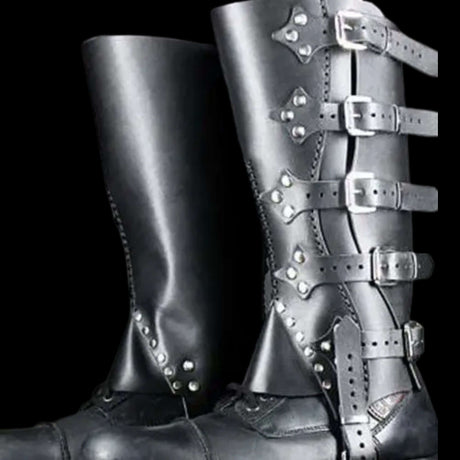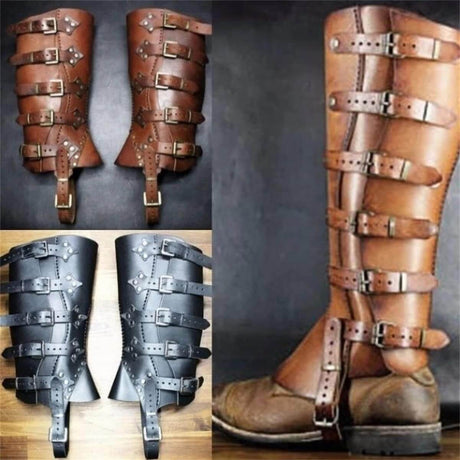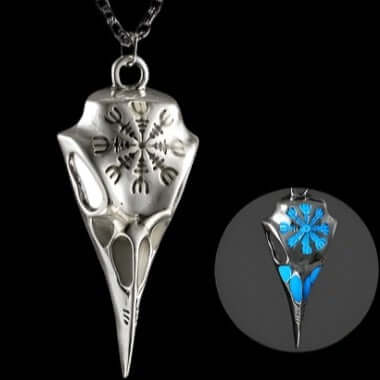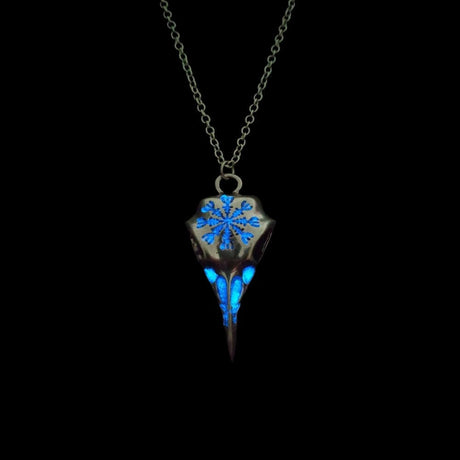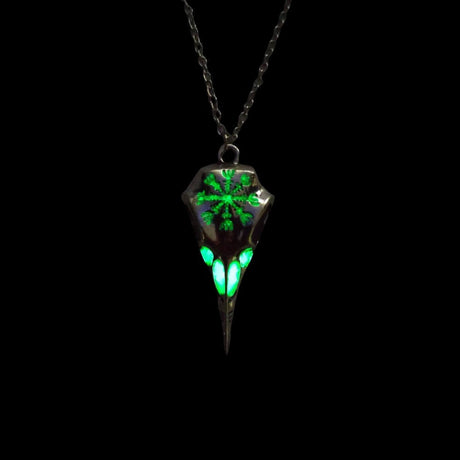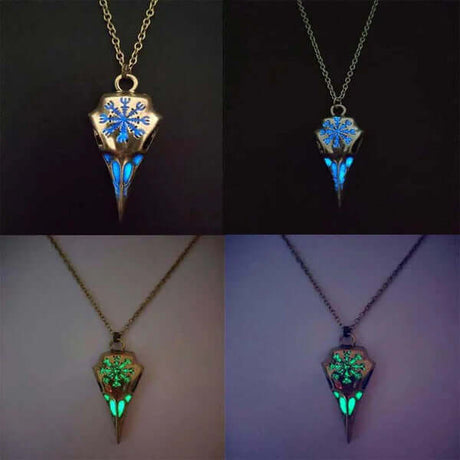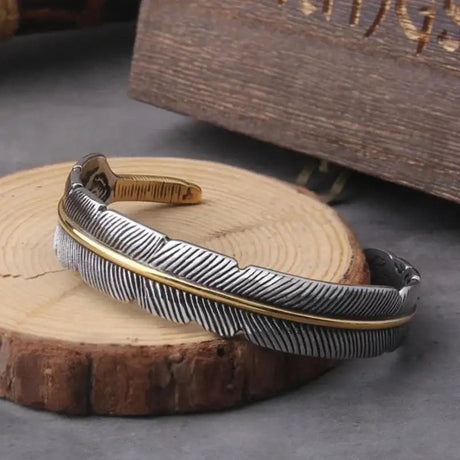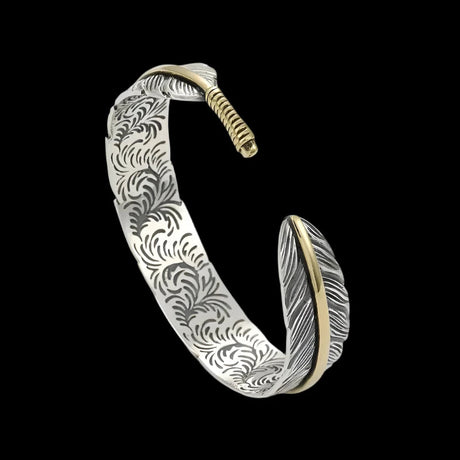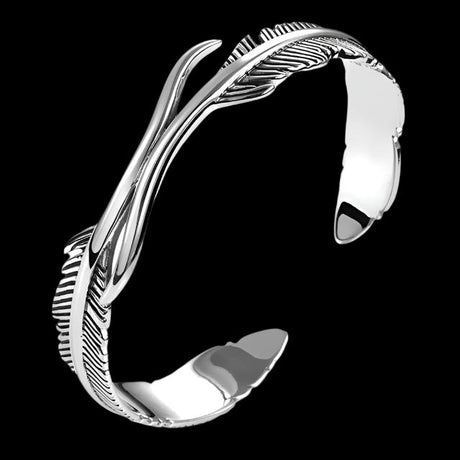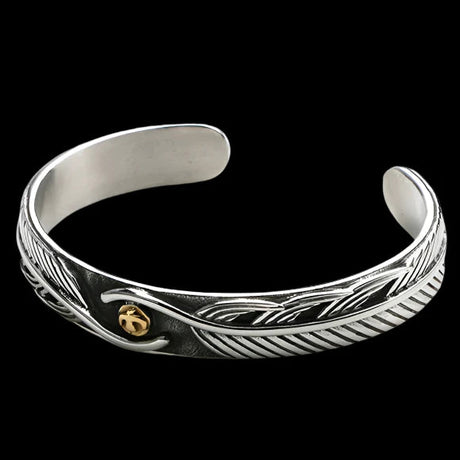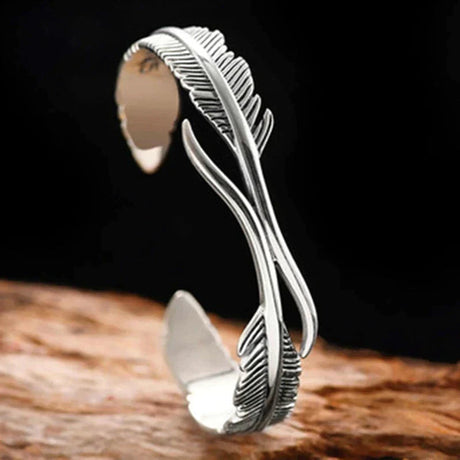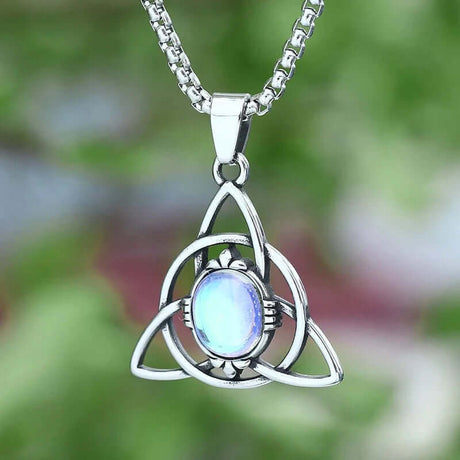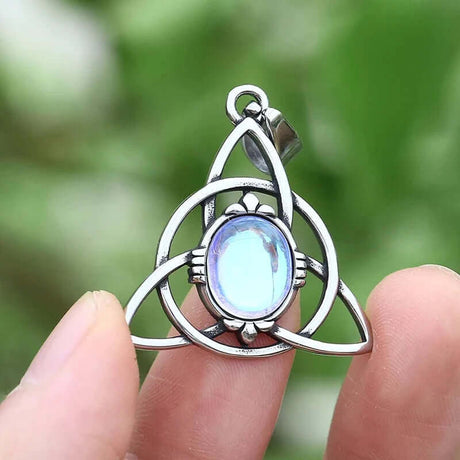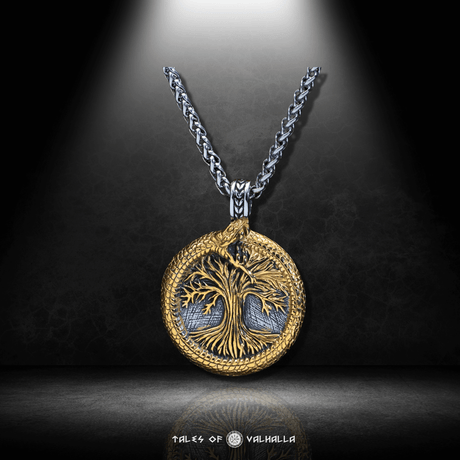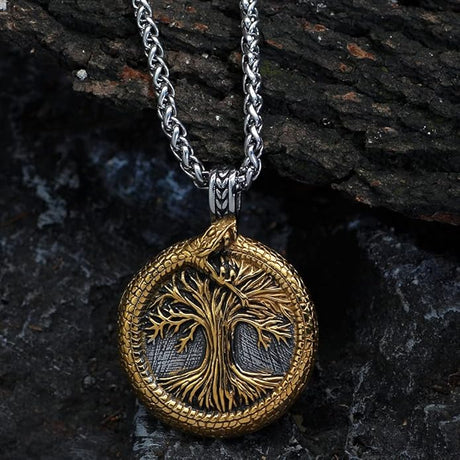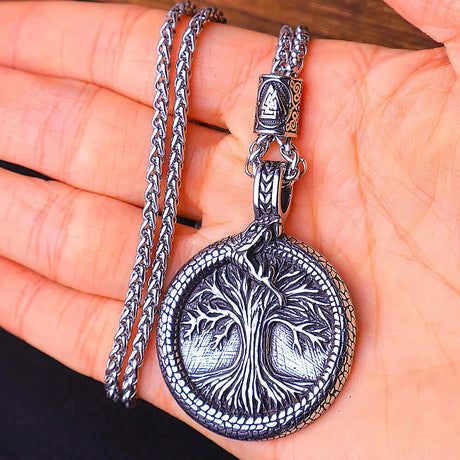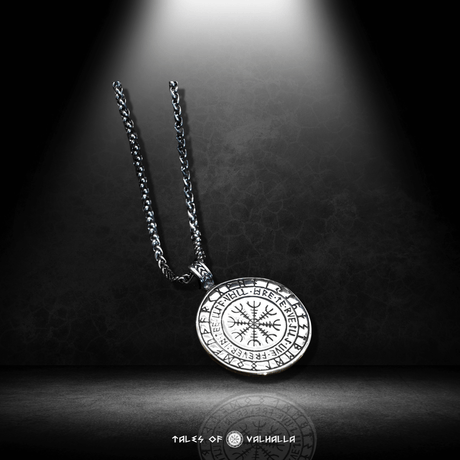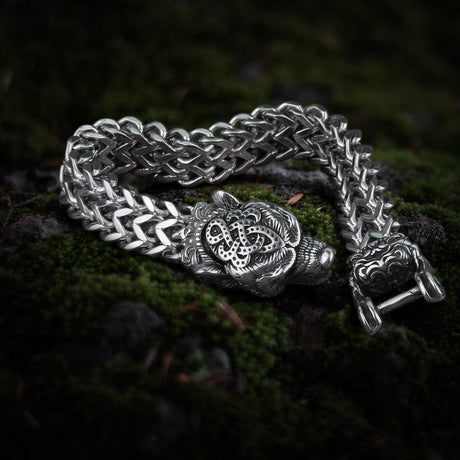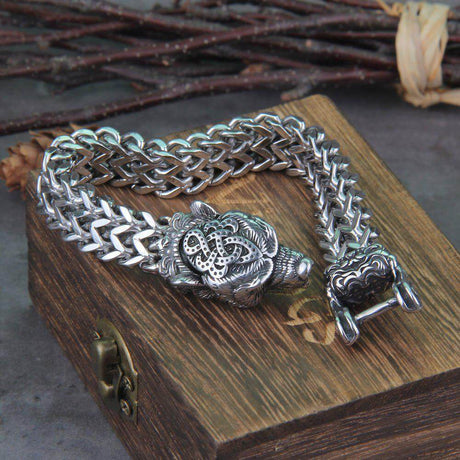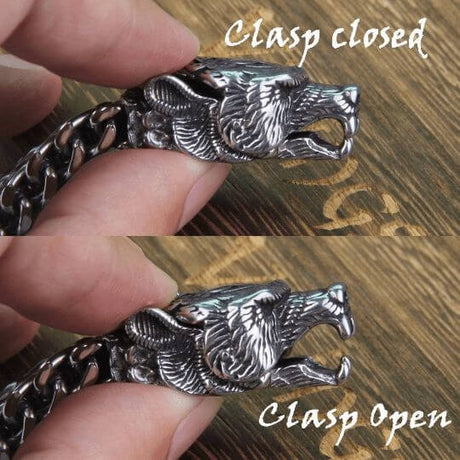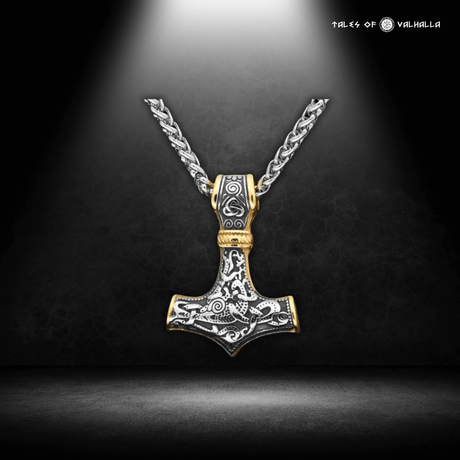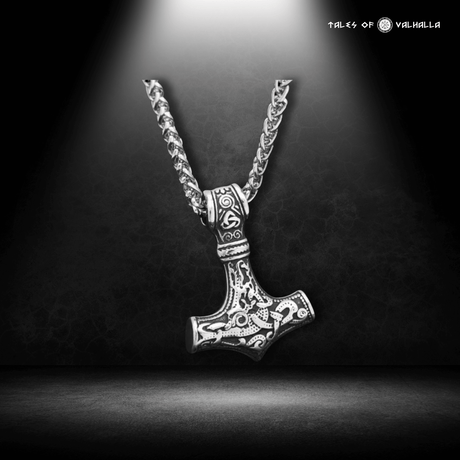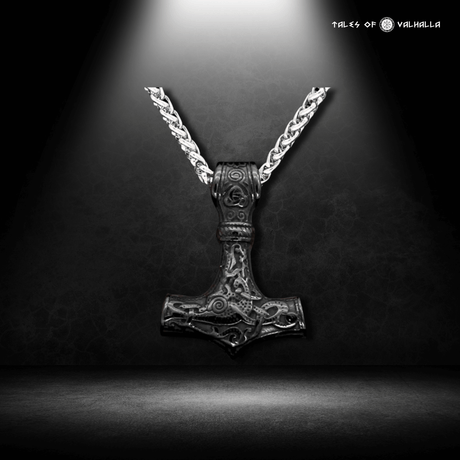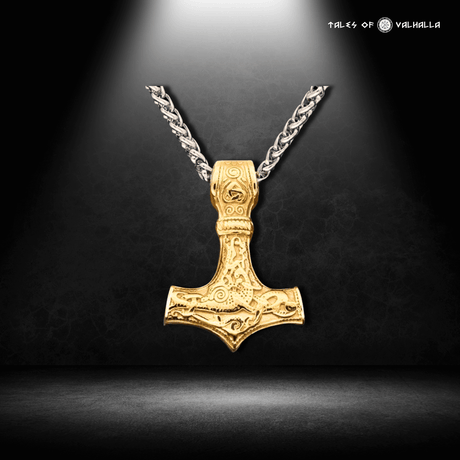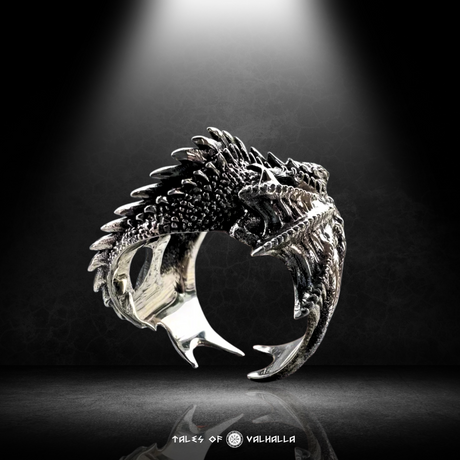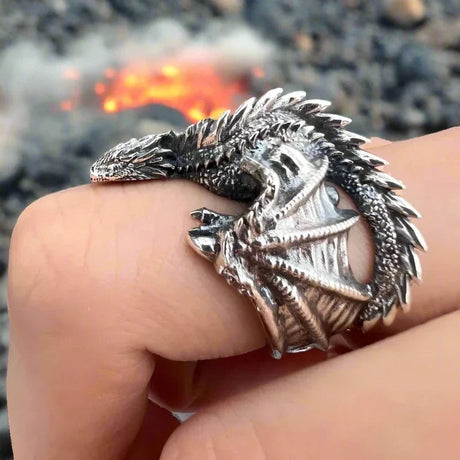When you picture a Viking warrior, your mind likely conjures an image of a fierce figure clad in armor, wielding a battle axe, and, most notably, wearing a helmet with imposing horns. This depiction has dominated popular culture for centuries, but how accurate is it? Did the Vikings really wear horned helmets in battle, or is this just a modern myth? What did Viking helmets look like, and how were they designed to protect these legendary Norse warriors?
In this in-depth blog, we’ll explore the history of Viking helmets, their design, features, and functions. We’ll dive into the realistic Viking helmet to uncover the truths behind these ancient headpieces, while debunking some of the myths that have persisted over the years. Whether you’re a fan of Viking history, an enthusiast of Norse culture, or just curious about the truth behind these fascinating pieces of armor, you’ll find all the information you need here.
The Myth of Horned Viking Helmets
Before we dive into the history of Viking helmets, let’s first address the elephant—or rather, the horns—in the room. One of the most enduring myths about the Vikings is that they wore helmets adorned with horns. However, if you’re wondering, did Vikings really have horns on their helmets?—the answer is a resounding no.
Where Did the Horned Helmet Myth Come From?
The image of Vikings wearing horned helmets is one of the most iconic yet inaccurate depictions of Viking warriors. The truth is, realistic Viking helmets did not feature horns at all. The myth began in the 19th century when Viking imagery was romanticized in art, literature, and performances. The famous costume designer Carl Emil Doepler played a pivotal role in popularizing the idea of horned Viking helmets in his designs for Richard Wagner’s opera Der Ring des Nibelungen.
This image of horned helmets has since become embedded in the public consciousness, even though it has no basis in historical or archaeological evidence. Unfortunately, this misconception persists in modern media, from movies to television shows to Halloween costumes.
Did Vikings Wear Horned Helmets in Battle?
Vikings wore horned helmets in battle? No, they didn’t. Horned helmets would have been impractical for combat, as they would likely get caught on weapons or make the warrior an easier target. Instead, the Vikings wore simple yet effective helmets designed to protect them from the blows of swords, axes, and other weapons.
The Viking helmet was primarily a tool of protection, and the addition of horns would have served no functional purpose in battle. So, while the image of the horned helmet is captivating, it’s purely a product of myth and fantasy.
The True Viking Helmet: A Practical Tool for Battle
Now that we’ve debunked the horned helmet myth, let’s explore what true Viking helmets actually looked like. Viking helmets were crafted with practicality and functionality in mind, providing essential protection during combat. Although only a few Viking helmets have been discovered, the evidence we have offers invaluable insight into how they were designed and used.
The Gjermundbu Helmet: A Rare and Historic Find
The most famous and well-preserved Viking helmet ever discovered is the Gjermundbu helmet, which was found in a burial mound in Gjermundbu, Norway, in 1943. This 10th-century helmet is the only fully intact Viking helmet ever unearthed, making it a critical artifact in our understanding of authentic Viking armor.
The Gjermundbu helmet is made of iron and features a rounded cap constructed from four plates. It also includes a prominent nose guard, or nasal, which protected the warrior’s face without obstructing their vision. The helmet’s design is simple but effective, allowing for protection in battle while being light enough for ease of movement.
Features of a Viking Helmet: Design and Construction
What set Viking warrior helmets apart was their simplicity and functionality. Unlike the highly ornate helmets of other cultures, authentic Viking helmets were designed with battle in mind. Here are some of the key features of historically accurate Viking helmets:
- Iron Construction: Viking helmets were primarily made from iron, a material that offered excellent protection against the swords, axes, and spears commonly used in Viking warfare.
- Nose Guard (Nasal): Many Viking helmets featured a nasal guard, which protected the warrior’s face from frontal attacks. This feature was practical, allowing the warrior to remain mobile and have full visibility while still offering protection.
- Rounded Shape: The rounded shape of the Viking helmet was essential for deflecting blows. The design helped prevent direct hits to the head, dispersing the impact of weapons and projectiles.
- Minimal Decoration: Unlike the highly decorative helmets of medieval knights, Viking helmets were often plain, focusing on function over form. While some Viking warriors might have added personal touches to their helmets, such as engraved symbols or designs, these helmets were not overly ornate.
The Purpose of Viking Helmets in Battle
Viking helmets were designed for one primary purpose: survival. In battle, a Viking’s head was one of their most vulnerable areas, and a well-crafted helmet could mean the difference between life and death. While the Gjermundbu helmet is the most complete Viking helmet ever found, fragmentary remains of other helmets show similar designs and structures, reinforcing the idea that Viking helmets were created with practicality at the forefront.
Pictures of Viking Helmets: Archaeological Finds and Modern Replicas
The few pictures of Viking helmets available today come from either archaeological discoveries or modern replicas based on those finds. As mentioned earlier, the Gjermundbu helmet is the most famous Viking helmet, but other partial helmet finds across Scandinavia provide additional context for what Viking helmets looked like.
Replicas of Viking Helmets in Museums
Several museums worldwide display replicas of Viking helmets, many based on the Gjermundbu find. These helmets are often accompanied by information about Viking culture, warfare, and craftsmanship, giving visitors a comprehensive view of what Viking warriors would have worn during the Viking Age.
For instance, the Viking Ship Museum in Oslo and the National Museum of Denmark in Copenhagen have exhibits that feature Viking helmets, swords, and shields, allowing visitors to see these remarkable artifacts up close. These authentic Viking armor displays show the simplicity of Viking warfare gear and highlight the focus on functionality over decoration.

Viking Helmets: Archaeological Finds
Viking Helmets in Popular Culture
Despite the historical evidence, the image of the horned Viking helmet continues to be perpetuated in popular culture. From Hollywood movies to TV shows and comic books, the horned helmet has become a symbol of Viking warriors, even though it’s far from accurate.
The hit TV series Vikings and The Last Kingdom have attempted to portray Viking helmets more accurately, with many of the characters wearing true Viking helmets similar to the Gjermundbu find. However, even these shows occasionally indulge in more stylized versions of Viking helmets, blending historical accuracy with artistic flair.
Viking Helmets in Combat: A Critical Piece of Armor
In battle, Viking helmets were indispensable. Whether during a raid on foreign shores or defending their own settlements, Viking warriors relied on their helmets to protect them in the chaos of hand-to-hand combat. Let’s take a closer look at how Viking warrior helmets functioned in combat and how they contributed to Viking success in warfare.
Close-Quarter Combat: The Helmet’s Role in Battle
Viking warfare often involved brutal close-quarters combat, where warriors faced each other in direct physical confrontations. Viking helmets provided essential protection in these encounters, particularly in deflecting sword strikes, axe blows, and arrows. The nose guard on many Viking helmets was designed specifically to protect the face from these kinds of attacks, allowing warriors to engage their enemies without fear of losing visibility or mobility.
In addition to protecting the head, Viking helmets were designed to fit snugly on the warrior’s head, ensuring they wouldn’t slip off during the heat of battle. This secure fit allowed the warrior to focus on fighting without worrying about adjusting their armor.
Viking Helmets and Raids: Survival on Foreign Shores
Vikings were known for their daring raids across Europe, particularly along the coasts of England, Ireland, and France. Helmets were crucial in these raids, as they allowed Viking warriors to protect themselves during surprise attacks. Whether raiding a monastery or clashing with local armies, Viking warriors relied on their helmets to shield them from the dangers of combat.
Viking helmets were also practical during long sea voyages. As Viking warriors sailed across rough seas in their longships, their helmets offered protection from the elements as well as potential battles that could arise at sea or upon landing.
The Craftsmanship of Viking Helmets: Skilled Blacksmiths at Work
The design and craftsmanship of Viking helmets were no small feats. Viking blacksmiths were highly skilled artisans who worked with iron, carefully shaping and forging helmets that could withstand the rigors of battle. Let’s explore the craftsmanship and materials that went into creating authentic Viking helmets.
Materials Used in Viking Helmet Construction
The primary material used in Viking helmet construction was iron. Blacksmiths would heat the iron until it became malleable, then hammer it into shape to form the helmet’s dome. The Viking helmet real design was typically made from several pieces of iron riveted together, ensuring that the helmet was both strong and durable.
In some cases, poorer Vikings might have used helmets made from hardened leather rather than iron. While these helmets would have offered less protection, they were still valuable in combat situations.
Crafting Viking Helmets: The Blacksmith’s Role
Viking blacksmiths played a critical role in Norse society, as their work ensured that warriors had the weapons and armor necessary for survival. Creating a Viking helmet required precision, skill, and an understanding of how to balance protection with weight and mobility.
One of the key challenges in crafting a Viking helmet was ensuring that it fit securely while allowing for comfort during battle. The interior of the helmet was often lined with leather or cloth to cushion the warrior’s head and absorb some of the impact from blows.
Viking Helmets in Modern Reenactments and Festivals
Today, Viking helmets are a popular feature of Viking reenactments, festivals, and historical displays. These events aim to bring Viking history to life, offering participants and spectators a glimpse into what it was like to live, fight, and survive during the Viking Age.
Historically Accurate Viking Helmets in Reenactments
Many Viking reenactors and living history groups strive to use historically accurate Viking helmets in their performances. These helmets are often based on the Gjermundbu helmet and other archaeological findings, ensuring that they reflect the true appearance of Viking warrior helmets.
Reenactments often feature large-scale Viking battles, where participants wear authentic Viking armor and wield replicas of Viking weapons, such as swords, axes, and shields. These reenactments provide an exciting and educational way to experience Viking culture firsthand while showcasing the practicality and design of Viking helmets.
Viking Helmets at Festivals and Museums
In addition to reenactments, Viking helmets are a popular attraction at Viking-themed festivals and historical museums. Many festivals, such as Viking festivals in Norway, Iceland, and the United States, feature Viking helmets as part of their celebration of Norse heritage.
Museums also play a key role in preserving the legacy of Viking helmets. Exhibits dedicated to the Viking Age often feature pictures of Viking helmets alongside other Viking artifacts, offering visitors a deeper understanding of Viking culture and history.
Conclusion
Viking helmets are one of the most iconic symbols of Viking warriors, though their true design has often been clouded by myths. Tales of Valhalla honors the authentic Viking helmet, a practical and essential piece of armor designed to protect Norse warriors in battle. While the image of a horned helmet is striking, it has no historical basis.
Thanks to archaeological finds like the Gjermundbu helmet, we’ve gained valuable insights into real Viking helmet designs. These helmets were simple, sturdy, and built for survival, embodying the true spirit of the Viking warrior.
FAQ
1. Did Vikings really wear horned helmets?
No, Vikings did not wear horned helmets in battle. The image of a Viking helmet with horns is a modern myth, popularized in the 19th century by costume designers and artists. Horns would have been impractical in combat, making the helmet bulky and easily caught on weapons. Historically accurate Viking helmets were simple, functional, and lacked any such adornments.
2. What did real Viking helmets look like?
Real Viking helmets, like the famous Gjermundbu helmet, were made of iron and featured a rounded cap with a nose guard (nasal) for facial protection. The design was practical, intended to deflect blows and provide protection during hand-to-hand combat. Viking helmets were constructed with functionality in mind, rather than for decorative purposes.
3. What materials were used to make Viking helmets?
Viking helmets were primarily made from iron. Some helmets may have been reinforced with leather or padded with cloth for comfort. While most Viking helmets were made from iron, it is possible that poorer Vikings used helmets made from hardened leather, though these would have offered less protection.
4. Why are horned Viking helmets so commonly depicted in popular culture?
The image of horned Viking helmets became popular in the 19th century, particularly through Carl Emil Doepler’s designs for Richard Wagner's opera Der Ring des Nibelungen. This visual representation caught on in art, literature, and eventually movies, creating the lasting myth that Vikings wore horned helmets. Despite being historically inaccurate, this depiction persists in popular culture.
5. How did Viking helmets protect warriors in battle?
Viking helmets were designed to protect warriors’ heads during close-quarters combat. The rounded shape helped deflect blows from swords, axes, and arrows, while the nose guard protected the face from direct strikes. The helmet’s lightweight design ensured that it did not impede the warrior's movement or visibility during battle.
6. Are there any Viking helmets in museums today?
Yes, several museums around the world display replicas of Viking helmets or feature exhibits based on archaeological finds, like the Gjermundbu helmet. The Viking Ship Museum in Oslo and the National Museum of Denmark in Copenhagen are examples of places where you can see historically accurate Viking helmets alongside other Viking artifacts. These exhibits provide valuable insight into Viking warfare and craftsmanship.

